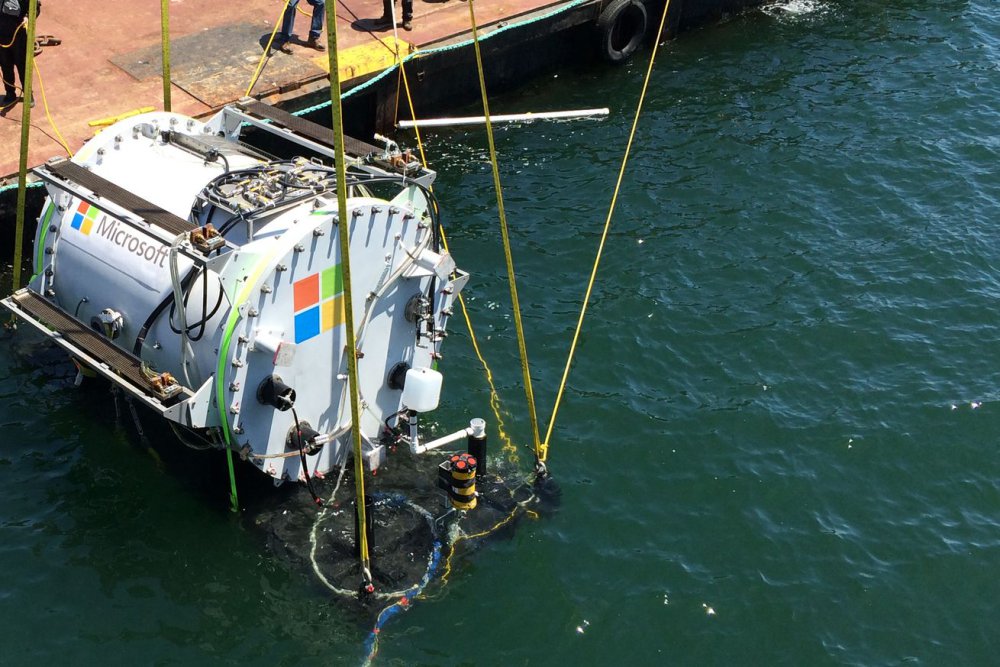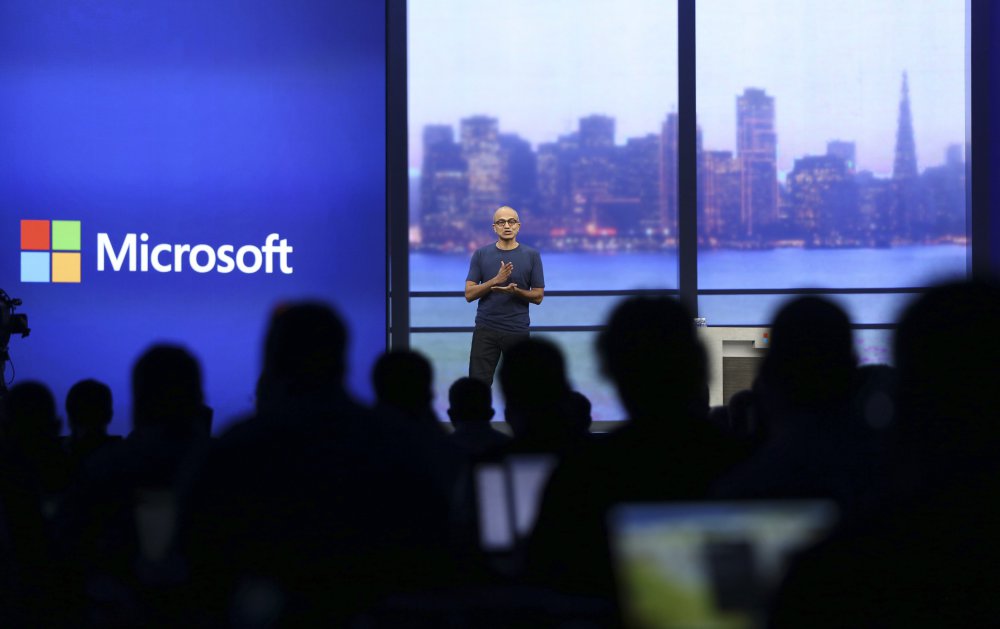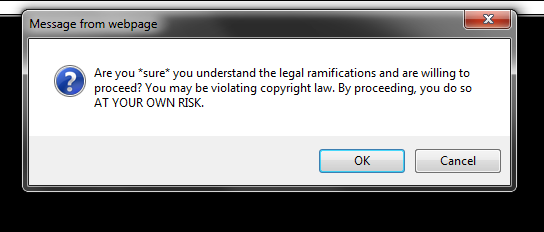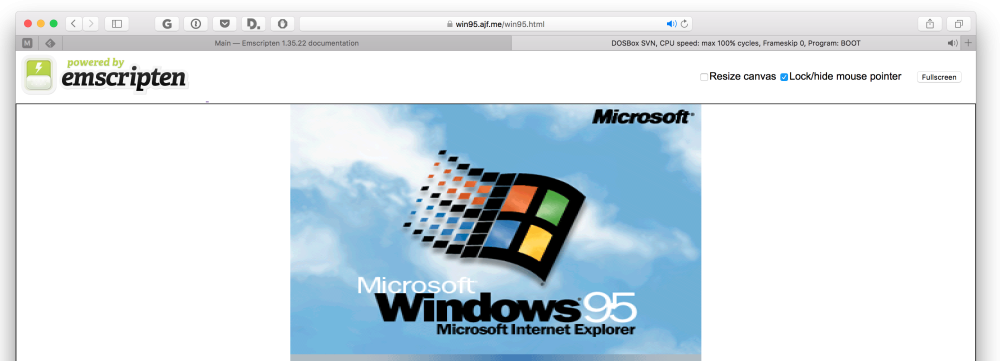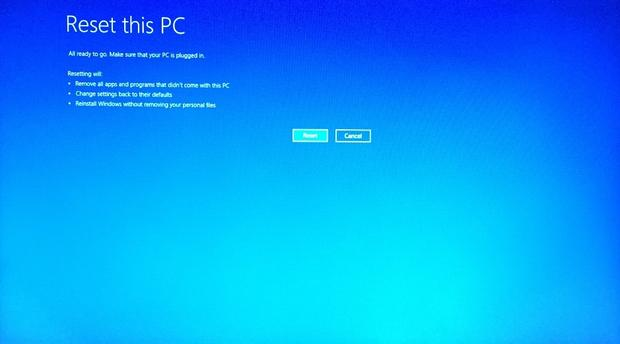-
Posts
7,282 -
Joined
-
Last visited
-
Days Won
2,416
Content Type
Forums
Blogs
Events
Resources
Downloads
Gallery
Store
Everything posted by allheart55 Cindy E
-

Help BleepingComputer Defend Freedom of Speech
allheart55 Cindy E replied to starbuck's topic in Tech Help and Discussions
Nice! They are going to need a lot more than that. Maybe if Enigma sees that BC won't back down, they'll think twice before trying to pull something like this again. -
As of 01 February 2016, Windows 10's status as an update on Windows 7 and 8.1 systems changes from Optional to Recommended and there is one setting in Windows Update on both systems you need to change to make sure you do not get upgraded before you are ready. It was last fall when Terry Myerson, Microsoft's Executive VP for the Windows and Devices Group, laid out details about controlling the Windows 10 upgrade. Shortly after his blog post the Windows 10 Upgrade on Windows 7 and 8.1 became an optional update in Windows Update in order to make it easier to find the upgrade. This occurred because they were ending the reservation process that had been in place since before the OS's release on 29 July 2015. At that same time he informed readers that the Windows 10 Upgrade would have its status changed from Optional to Recommended early in 2016 and that date was 01 February. So what does this change mean for you? First, it does not mean you do not get a choice about upgrading to Windows 10. Even if you happen to download the Recommended update you will still have the option to refuse the upgrade as it prepares to install on your system. Plus the 30 day window for reverting back to your previous version of Windows will still be available if you decide to go ahead with the upgrade and try it out. If Windows 10 is not your cup of tea then just revert back using the tools in Windows 10. Second, Recommended updates are not installed on Windows 7 and 8.1 by default unless you make a change in your Windows Update settings to install them alongside of Important updates. If you want to verify your Windows Update settings to prevent the Windows 10 upgrade from installing then you will want to make sure that option is turned off. Here is how you do that. Windows 7 1. Open up Windows Update. From the main screen you will see several options listed on the left side. Click on Change settings. 2. Below Recommended updates make sure the selection box is unchecked. This will prevent Recommended updates from installing along side of Important updates. Click OK to apply the settings. You can now close out of Windows Update. Windows 8.1 In Windows 8.1 there are two places you can turn off the option for installing Recommended updates setting - in Windows Update settings on the desktop or in PC Settings on the Modern side. This setting will be set across the OS whether you change the setting on the desktop or modern side of the OS. 1. In the Windows Update settings on the desktop the setting is in the same place as it is on Windows 7. Just open up Windows Update, click on Change settings on the left side and then make sure the box under Recommended updates is not checked and the click OK at the bottom of the dialog box. 2. In the modern PC Settings app go to PC settings > Update and recovery > Windows update and select Choose how updates get installed. 3. Make sure that the Recommended updates box is unchecked and the click Apply. You can go ahead and close out the PC Settings app now. Although the Windows 10 upgrade will still appear in Windows Update on Windows 7 or 8.1 it will not automatically install with this setting turned off. Source: winsupersite
-
-
-

Help BleepingComputer Defend Freedom of Speech
allheart55 Cindy E replied to starbuck's topic in Tech Help and Discussions
Yes, sad but true. -

Help BleepingComputer Defend Freedom of Speech
allheart55 Cindy E replied to starbuck's topic in Tech Help and Discussions
I just read the entire thread and I don't see anything that BC did or said that was wrong. I don't mind donating something to help towards this unmerited lawsuit. -

hp 11-n010dx legacy boot problem
allheart55 Cindy E replied to mikehende's topic in Tech Help and Discussions
It happens. I hate it when I run out of time. -

hp 11-n010dx legacy boot problem
allheart55 Cindy E replied to mikehende's topic in Tech Help and Discussions
Thanks for letting us know, Mike. (I assume the repair never completed.) -
Recently headlines such as Windows Phone is Dead have dominated the tech press after Microsoft released their most recent earnings report. The report was very good overall but it had one significant blemish - Windows Phone. In their second quarter report Microsoft revealed that only 4.5 million Lumia handsets were sold between October and December 2015. Two quarters earlier, April to June 2014, they had sold 10.5 million Lumia devices. That is more than a 50% drop in sales over a six month period but they did make major changes to the phone business starting in July 2015 so this is showing the direct impact of those changes. If you keep an eye on social media then the last week has been an emotional roller coaster for fans of the platform. There has been wide ranging discussion about what exactly caused the demise of Windows Phone and what could save it however, I am not convinced there is just a single solution to solve this dilemma or that it is even recoverable. So is it time to seriously consider other platforms? There is certainly not a lack of Microsoft apps and services on the two major platforms, iOS and Android, so which would you choose and why? Source: winsupersite
-
When your laptop or your smartphone gets hot, you know it's crunching a lot of data. So you can imagine the amount of heat generated by the racks upon racks of servers that store and process the world's digital lives. Keeping these data centers cool is such a problem that tech companies like Facebook and Google prefer to move them to colder countries than pay the air conditioning bill. But for Microsoft, there's an even better home for all that data: under the sea. Microsoft's prototype server ran for 105 days This morning, Microsoft unveiled Project Natick — an ongoing research project into subsea data centers that could be both cost effective and environmentally friendly. The company started exploring the idea in 2013 after Microsoft data center employees wrote a white paper about the concept (one of the authors had experience on a navy sub). Development of a physical prototype began in 2014 and in August last year, the company deployed its first ever submarine server — a steel capsule some eight foot in diameter — off the coast of California. It ran for 105 days in total, with Microsoft's engineers saying it was more successful than expected. "When I first heard about this I thought, ‘Water ... electricity, why would you do that?’" Ben Cutler, a computer designer for Microsoft who worked on the project, told The New York Times. "But as you think more about it, it actually makes a lot of sense." The Natick team (from left to right: Eric Peterson, Spencer Fowers, Norm Whitaker, Ben Cutler, Jeff Kramer) with the prototype server. (Image credit: Microsoft) Placing data centers underwater not only helps keep their contents cool, but also has logistical advantages. Microsoft points out that half of the world's population lives within 200 kilometers of the ocean, making subsea systems potentially easier to deploy when extra capacity is needed. The company also believes that if it can mass produce the capsules it could set them up in just 90 days — much quicker than the two years needed to build a data center on land. Engineers involved in the project even believe that one day, subsea data centers might be able to power themselves using underwater turbines or tidal power to generate electricity. It's an attractive idea, but there are obviously plenty of challenges, not least of all the difficulty of creating data centers that can survive without regular checkups. Data centers on land are open for engineers to fix and replace servers whenever needed, but Microsoft wants its undersea systems to go without maintenance for years at a time. "We see this as an opportunity to field long-lived, resilient data centers that operate 'lights out' — nobody on site — with very high reliability for the entire life of the deployment, possibly as long as 10 years," says the company. Leona Philpot being christened by the Natick team. (Image credit: Microsoft) Microsoft's first prototype, named Leona Philpot after a character from Halo, contained only a single computing rack sealed in pressurized container filled with nitrogen. More than a hundred different sensors were used to monitor conditions inside and outside the capsule, says The New York Times, with Microsoft's engineers keeping an eye on conditions like humidity, pressure, and motion. The sensors also measured the capsule's impact on its environment — although thankfully, the sounds of the server's fans were drowned out by the noise of nearby shrimp, while the heat it generated only affected the water a few inches around the vessel. Obviously the project is still in the early stages of development, but Microsoft says it's the right time to start rethinking data centers. Not only is demand for data growing as cloud computing becomes more popular, but the slowing of Moore's Law (the observation that computing power doubles roughly every two years), means that servers are less likely to become outdated. Microsoft is already working on its next step — an underwater system three times the size of the Leona Philpot — with the company expecting to start new trials some time next year. Source: theverge
-
- air conditioning
- data centers
-
(and 2 more)
Tagged with:
-
-

hp 11-n010dx legacy boot problem
allheart55 Cindy E replied to mikehende's topic in Tech Help and Discussions
I would definitely give it more time and see what happens, Mike. -

hp 11-n010dx legacy boot problem
allheart55 Cindy E replied to mikehende's topic in Tech Help and Discussions
How long of a time have you allowed the Diagnosing your pc to run? In rare cases, I have seen it go longer than an hour. -

hp 11-n010dx legacy boot problem
allheart55 Cindy E replied to mikehende's topic in Tech Help and Discussions
Look for Advanced Options in one of those windows that come up. Repair Windows will be there. -

hp 11-n010dx legacy boot problem
allheart55 Cindy E replied to mikehende's topic in Tech Help and Discussions
It would be a lot easier to strap the drive to a working computer and pull the files off that way. TBH, that is what I always do. It is a lot quicker as well. -

hp 11-n010dx legacy boot problem
allheart55 Cindy E replied to mikehende's topic in Tech Help and Discussions
Do you have a bootable Linux disc loaded in the optical drive? Can you access the Windows desktop at all? -

hp 11-n010dx legacy boot problem
allheart55 Cindy E replied to mikehende's topic in Tech Help and Discussions
Do you have a USB optical drive plugged into the laptop, Mike? -

hp 11-n010dx legacy boot problem
allheart55 Cindy E replied to mikehende's topic in Tech Help and Discussions
Mike, Check Figures 8, 9 and 10 here -
Microsoft is giving away Windows 10 to any existing customers for free until July 29, 2016. This is a dramatic shift from how previous versions of Windows have worked. Beyond this, it has also had a big effect on how Microsoft's finances work. Giving away the operating system for free seems like it makes no sense. Traditionally, Microsoft has made money by selling Windows (or, as an extension, Office) to consumers and businesses. Now, it just sells Windows to businesses and gives it away to consumers. The reasoning behind this is simple, and has been articulated by Microsoft many times: Windows on one billion devices. Getting Windows 10 onto one billion devices — roughly the same number as Apple has on iOS — is tough. Windows is a computer operating system, not a phone operating system. This was great when PCs ruled, but that is no longer true. However, the PC market is still massive — around 270 million units per year — and Microsoft has a good chance of getting Windows 10 onto one billion devices. But to do it, the company had to make a compromise and give it away for free. REUTERS/Jason RedmondMicrosoft Corp shareholders drink coffee as they wait to hear Chief Executive Satya Nadella speak at his first annual shareholders' meeting in Bellevue, Washington December 3, 2014 Drastic times call for drastic measures To make that decision — which was likely the idea of CEO Satya Nadella — possible, Microsoft has had to invent new lines of revenue. Office 365, for example, works better when a lot of people use it because it's subscription-based. Instead of getting a one-time fee — usually around $100 (£70) per copy — Microsoft now gets $5.99 (£5.99) every month which, in a little over a year, generates more money than the old model. This change means that Microsoft has had to look for different ways to monetise Windows. The Windows Store is one example of this and, according to Microsoft, it's becoming a hit (annoyed developers aside). Microsoft needs the most amount of people to use the Windows Store to make it viable. Apple's App Store, which is worth tens of billions of dollars a year, is valuable because one billion people have access to it. Apple recently announced its holiday quarter results and made a big deal out of its "Services" division which, in essence, was the App Store. According to Apple, its services business is worth $31 billion (£22 billion) per year. Microsoft wants to get some of that $31 billion — or, more accurately, create its own — and giving away Windows is a key part of that mission because the more people you have using your operating system, the more money you can make from it. REUTERS/Hannibal HanschkeMicrosoft CEO Satya Nadella holds a speech to present the companies new cloud strategy for Germany in Berlin, November 11, 2015. But why did Microsoft want to change its business model? The PC market, despite shipping 270 million units, is on the decline as people buy smartphones. Microsoft's smartphone business is in trouble having shipped just 110 million units in its entire lifetime compared to around 4.5 billion iOS and Android shipments. Essentially, Microsoft has had little choice but to give away Windows for free, to anyone, to increase usage in a world that is increasingly hostile to PCs. Microsoft has also been distributing its apps on other platforms and now has over 300 million Office downloads on iOS and Android. The company originally made the apps exclusive to Office 365 customers but has since opened it up to anyone. A big kick in revenue from cloud service — around $6.3 billion (£4.4 billion) in the last quarter — also helped the company navigate this change. REUTERS/Thomas MukoyaMicrosoft CEO Satya Nadella © takes photographs with delegates after the launch of the Windows 10 operating system in Kenya's capital Nairobi, July 29, 2015. So what happens if the plan goes wrong? Microsoft is running a big risk giving away Windows for free and, come July, could choose to do any number of things. The company says it currently has over 200 million Windows users but that number needs to increase fivefold — and that isn't likely to happen in the next four or five months. ZDNet speculates that Microsoft could do one of three things: Go back to the original model of charging users a license to get Windows. Extend the period of time Windows 10 is free for. Change out the free offer for a different offer. Any of these three options is viable and the only way to find out what the company will do is wait until July 26, but the most likely guess at this time is that Microsoft chooses option two, bites the bullet, and offers another six months of free Windows 10 to on-board as many users as possible. However, the free offer will have to end eventually and Microsoft could be a very different company by that time. According to Microsoft's holiday quarter report, the Windows Store is growing, the third-party apps are a hit, cloud revenues are up, and the Surface line is looking bright — but will these be enough to bring Microsoft into a new age? We'll have to wait until July 26, 2016 to find out. Source: businessinsider
-
That Windows 95 startup sound always gives me nostalgia, but how about taking it for a whirl without setting anything up whatsoever? Andrea Faulds, a 19-year-old developer in Scotland, managed to get Windows 95 to function fully in the browser without any plugins. It’s a truly incredible sight to behold: seeing the 20-year-old operating system fully functioning in pure JavaScript is amazing — you can play Freecell, mess around in DOS or just enjoy the nostalgia. The project uses emscripten, an emulator that compiles C++ code to JavaScript at runtime so you can enjoy the full retro experience without needing to install a plugin or set up Windows 95 from scratch. Just the thought of how many layers of complexity are here is dizzying: an operating system being compiled to JavaScript, delivered over the internet and successfully interpreted by a browser. The emulator isn’t perfect (Internet Explorer crashes inside the emulator, which is to be expected) but it’s an impressive demo of how far we’ve come and a cool trip down memory lane. ➤ Windows 95 in the browser Source: thenextweb
-
Using Reset This PC with the Keep My Files option will essentially perform a fresh install of Windows 10 while keeping all your data intact. When you choose this option from the Recovery Drive, it will find and back up all your data, settings, and apps. It will then install a fresh copy of Windows and restore the data, settings, and the apps that were installed with Windows 10. When your PC restarts, just log in with your same username and password and find all your data. It's important to remember that using Reset This PC with the Keep My Files option does not back up and restore any desktop applications you have installed. The reasoning is that a recently installed desktop application could be the cause of the instability. To help you to remember what desktop applications you had installed, the Reset This PC tool will create a list of those applications that were not saved or restored, so that you can decide whether you want to reinstall them. What you need To run Reset This PC with the Keep My Files option, you'll need to have created a Recovery Drive. (See Be prepared: Create a Windows 10 Recovery Drive for a description of that process.) If you are using an optical disc Recovery Drive—or for some reason couldn't use the Back Up System Files To The Recovery Drive option, you can still use Reset This PC with the Keep My Files option. You will just need to have some form of Windows 10 installation media, either USB or DVD. You can create your own Windows 10 installation media using the Windows 10 Media Creation Tool from Microsoft. Running Reset This PC with the Keep My Files option Running Reset This PC with the Keep My Files option is actually easy. It will take some time to complete, but it is a straightforward operation. After your system boots from the Recovery Drive and you select the Troubleshoot > Reset This PC option. You'll select the Keep My Files option, as shown in Figure A. Figure A Select the Reset This PC tile, then select Keep My Files. You'll then be prompted to choose the target operating system, as shown in Figure B. At first this seems to be a redundant question. But I suppose if I had a dual-boot configuration, this step would make more sense. Figure B Select the Windows 10 tile. In a moment you'll see the Reset This PC screen, which outlines what this option will provide (Figure C). Figure C After you read through the information on the screen, click the Reset button. In case the text in the screenshot is a little fuzzy, I'll list the info here. Resetting will: Remove all apps and programs that didn't come with this PC Change settings back to their defaults Reinstall Windows without removing your personal files To proceed, click the Reset button. (If required, you will be prompted to insert your Windows 10 installation media at this point.) The system will then reboot and begin performing the first stage of the procedure, as shown in Figure D, which includes saving your data files and settings. Figure D Your system will reboot and start the first stage of the reset procedure. During the next stage of the procedure, the system begins installing Windows, as shown in Figure E. When the percentage count hit 99%, I thought it was ready to finish—but it actually sat at the 99% mark for quite a long time. On my test system, the entire procedure took somewhere around 40 minutes to complete, and of course the system restarted several times. Figure E During the second stage of the procedure, the system begins installing Windows. After the final restart, your Login screen will appear and you'll be able to log in with the same username and password, just like you always have. When you log in for the first time, some of the standard screens associated with Windows 10's first run will appear. Once everything is complete and you see the desktop, look for an HTML file called Removed Apps. Open the file in Microsoft Edge and you'll see a display similar to the one shown in Figure F. Figure F [ The Removed Apps file contains a list of all the applications that were removed during the Reset operation. As you can see, this list shows all the applications that were removed from my test system during the Reset operation. At this point, you can begin reinstalling your desktop applications. You can then get right back to work on a stable system.





